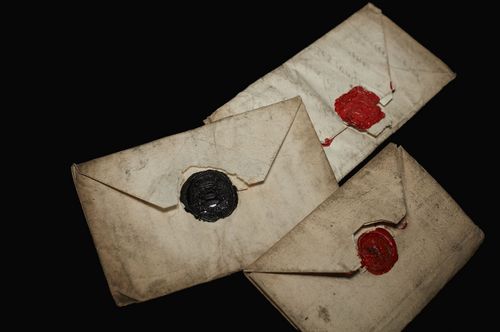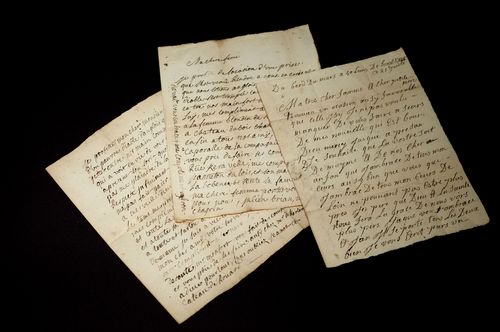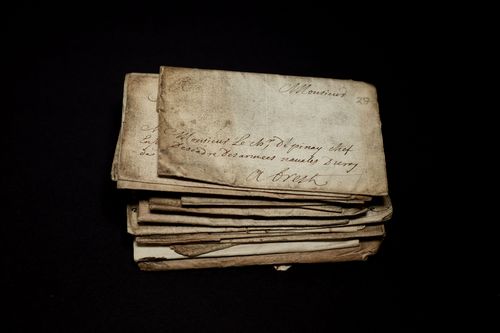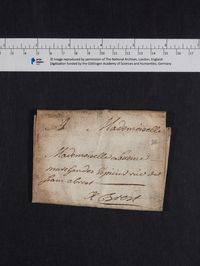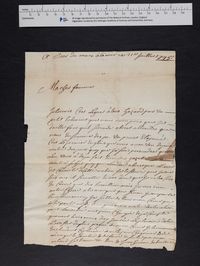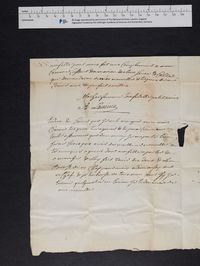The John and Constant
The John and Constant
The 'John and Constant' was an English merchant ship that was commanded by its master, Roger Curling, under whom it set out from Livorno to London, probably in July 1745, loaded with goods such as oil, wine, marble, straw hats and orange flower water. These goods were not only accompanied by bills of lading from Italian merchants but also from English merchants that were based in Livorno, usually in the form of small trading companies. In addition, several bills of lading came from Jewish companies, such as the Levi Sonsino family, which was present in Livorno as well as in London.
Discover HCA 32/120/13: The John and Constant in TNA Discovery
Browse the documents in the Prize Papers Portal
The 'John and Constant' was captured on 20 July, not far from Ushant Island, by a French squadron consisting of seven ships. This squadron, under the general command of Antoine Alexis Perier de Salvert, had to help Louisbourg which was being besieged by the British since May 1745. Shortly after it had left Brest on 16 July, it came across the 'John and Constant' and captured it on 20 July. Perier de Salvert detached 14 men from the squadron’s various ships to take the prize back to France, while the squadron’s remaining sailors took advantage of this opportunity to send news to their relatives. Four days later, however, the prize was recaptured by two English privateers along with 45 letters written by the French sailors.
These letters are highly interesting for many reasons – the first being that they provide information on the rather involuntary capture of the 'John and Constant' since the French squadron was in a hurry to get to Louisbourg and was not intending to “chase away all the ships we see that would divert us from our route”. But the little merchant ship, fooled by the English flags displayed by the French ships, came to them: “We have just taken an English ship which let itself be taken like a fool because we were not looking for it, but it came to us and we were forced to take it.”
Furthermore, the letters offer insights into the bonds of affection between the sailors and their correspondents: wives, parents, cousins or friends. The fact that they were written barely four days after their departure shows how few opportunities seamen had to keep in touch with their loved ones over long periods of time. While some of the letters are touchingly tender and others contain more suggestive statements, the majority of the letters contain greetings which the letter’s recipient was supposed to pass on to other relatives of the sailor. As most of them were from Brest, many names can be found throughout the letters allowing us to get an idea of the social circle surrounding the sailors and their families - even on land. Unless there was a small dispute between them, it was not uncommon for sailors to take advantage of a letter written by one of their shipmates in order to greet their own relatives: “Please go to my godmother Madame de Montalay to assure her of my respects and tell her that her husband is so angry with me because I won him [sum of money?] in a game of piquet that he did not want to mention me in his letter.”
Last but not least, the letters are representative of the social diversity that existed within the squadron. Some were written by modest sailors to their families, many of whom lived in the famous Rue du Siam in Brest, whereas others were written by higher ranking naval officers from the nobility of Brittany (de Moëllien, de Rosily, de Kerhorlay etc.) and were addressed to their relatives living in Hôtels particuliers.

by Lisa Magnin
Contact:
Transcription and translation of HCA 32/120/13/36
Download the PDF file
Credit: Letters found as mail-in-transit on the ship The John and Constant. TNA, HCA 32/120/13 and HCA 32/104/20, Photo: Maria Cardamone, Prize Papers Project. © Images reproduced by permission of The National Archives, London, England.



